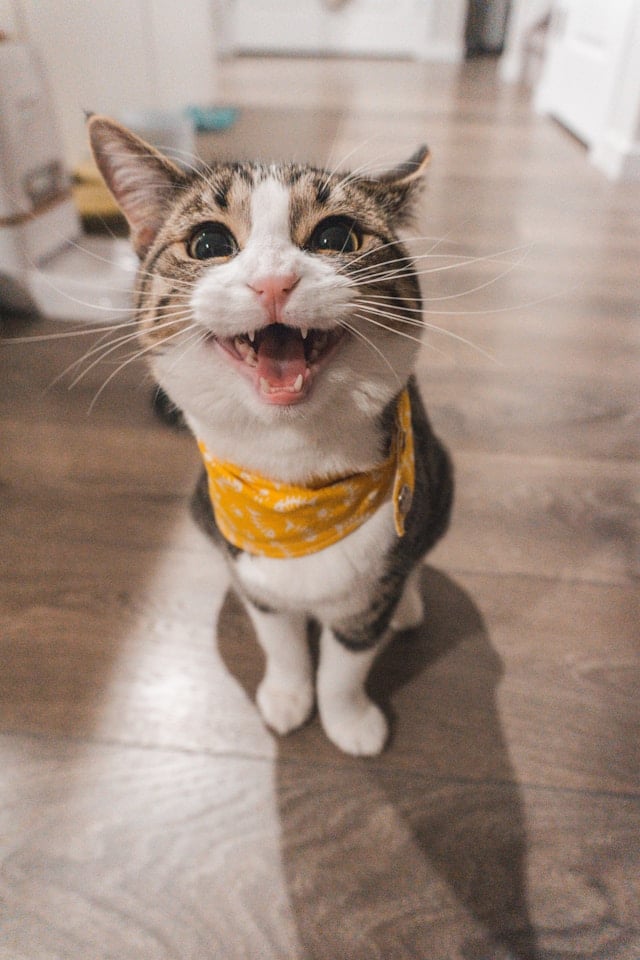What’s the Most Effective Approach to Rehabilitating an Overweight Cat?

Obesity is a common health concern in pets, particularly among cats. It is estimated that nearly half of our feline friends are overweight or obese. Although they might appear content in their plump state, carrying extra body weight can lead to various health complications for a cat. As responsible pet owners, it’s your duty to help them shed those extra pounds and regain a healthy lifestyle. But how do you do that? In this article, you’ll learn about the most effective approach to rehabilitating an overweight cat, including diet changes, exercise routines, and even veterinary therapeutic techniques like hydrotherapy.
Understanding Feline Obesity and Its Implications
Before jumping into the steps of rehabilitation, it’s crucial to understand what obesity means for a cat and why it’s harmful. Obesity is defined as excess body fat that is severe enough to compromise a pet’s health. In cats, it often results from the intake of more energy than the body can use, causing the excess to be stored as fat.
Sujet a lire : How to Create a Balanced Diet for a Dog with a Sensitive Stomach?
Obesity in cats can lead to a variety of health issues, including diabetes, arthritis, urinary problems, and even shortened lifespan. Therefore, it’s vital for cat owners to monitor their cat’s weight and take action when necessary.
Tailoring a Suitable Diet Plan
One of the primary factors contributing to feline obesity is diet. Many cat owners unknowingly overfeed their pets, leading to weight gain. More often than not, the food served is high in calories, which doesn’t help the situation either.
A lire également : What’s the Best Way to Protect Your Pet’s Paws from Hot Pavement?
A suitable diet plan for an overweight cat is one that is balanced and portion-controlled. Aim for a diet that is high in protein and low in carbohydrates. Some pet owners also find success with feeding their cats wet food, which often has fewer calories than dry food.
However, be sure to transition to a new diet gradually to prevent digestive problems. Moreover, always consult a veterinary professional before making drastic changes to your cat’s diet.
Encouraging Regular Physical Exercise
Physical exercise is as important for cats as it is for dogs. It helps burn off excess energy, maintain muscle tone, and keep the body weight in check. Unfortunately, many cats lead sedentary lifestyles, especially indoor cats, contributing to weight gain.
To encourage your cat to exercise more, provide engaging toys that will stimulate their instinct to hunt and play. Laser pointers, feather toys, and interactive puzzle toys are all great options. In addition to playtime, you can also encourage physical activity by placing their food in locations that require them to climb or jump.
Using Veterinary Physical Rehabilitation Methods
When diet and exercise aren’t enough, or if your cat is severely overweight, veterinary physical rehabilitation methods can be beneficial. These therapies are similar to the ones used in human medicine and can help improve a cat’s mobility, reduce pain, and ultimately, promote weight loss.
One popular form of physical rehabilitation for cats is hydrotherapy. Hydrotherapy involves exercising in water, using the water’s resistance to strengthen muscles and improve cardiovascular health, while the buoyancy reduces strain on joints. This is particularly beneficial for overweight cats that struggle with traditional forms of exercise.
Monitoring and Adjusting the Plan as Needed
Successful weight loss in cats requires consistent monitoring and adjustments to the plan as needed. Keep track of your cat’s weight loss progress by weighing them on a regular basis. If your cat isn’t losing weight despite following the diet and exercise plan, it may be necessary to adjust the plan or seek additional veterinary advice.
Remember, weight loss in cats should be gradual and not drastic. Rapid weight loss can lead to serious health complications, so aim for a steady, healthy rate of weight loss.
Your cat’s journey to a healthier weight won’t be an overnight change. However, with dedication, reformation in diet, increased physical activity, possible therapy, and regular monitoring, you can help your feline friend lose weight and lead a healthier, happier life.
Implementing Weight Management Techniques
Weight management is a critical part of maintaining your cat’s health and helping them shed those excess pounds. It involves a balanced combination of proper nutrition, regular physical activity, and, if necessary, veterinary intervention such as physical therapy.
Firstly, managing your cat’s caloric intake is key. It’s important to remember that each cat may require a different amount of calories per day, depending on factors like their age, body condition, and energy expenditure. An older, sedentary cat will likely require fewer calories than a young, active one. To determine your cat’s caloric needs, consult with a veterinary nurse or a nutritionist who specializes in pet nutrition. They can guide you on the correct portion sizes and provide advice on the best, high-protein, and low-carb food options for your cat.
Another aspect of weight management is physical activity. Cats, like humans, require regular exercise to maintain muscle mass and control body weight. Lack of physical activity can lead to weight gain, loss of muscle tone, and a host of other health issues. To encourage your cat to move more, engage them in interactive play sessions. Use toys that stimulate their natural instincts like laser pointers, balls, or even simple feather toys.
Moreover, it’s important to monitor your cat’s body condition score consistently. This score helps you to understand if your cat is underweight, overweight, or at a healthy weight. Regular check-ups with your veterinarian can help you keep track of this score and adjust your weight management plan as needed.
Role of Physical Therapy in Cat Weight Loss Plan
When the conventional methods of diet control and regular exercise do not yield the desired results, physical therapy can be a viable solution. Physical therapy for cats, much like for humans, involves using specific exercises and techniques to improve mobility, increase strength, reduce pain, and promote overall health.
One effective physical therapy method for obese cats is hydrotherapy. This involves the cat exercising in water, a medium that provides resistance to build muscle mass while its buoyancy reduces the impact on their joints. This form of therapy is especially beneficial for overweight cats struggling with arthritis or other mobility issues.
Another form of therapy is therapeutic laser therapy. This method uses light to penetrate the cat’s tissues and induce a series of chemical reactions known as photobiomodulation. This process helps reduce pain, stimulate cell regeneration, and increase blood circulation, all aiding in weight loss.
Both these therapies should be performed under the supervision of a certified physical therapist or a vet trained in these techniques.
In Conclusion: Prioritizing the Health of Your Overweight Cat
Addressing obesity in cats requires a multi-faceted approach, involving diet changes, increased physical activity, potential therapies, and constant monitoring. It’s important to remember that your cat’s journey towards a healthier weight is a gradual process, and drastic weight loss could lead to serious health complications.
Weight management in cats is not merely about them losing weight, but also about helping them maintain a healthy weight. Regular vet check-ups, monitoring your cat’s body condition score, and observing changes in their behaviour and energy levels are key to managing your cat’s weight effectively.
Remember, every cat is different. What works for one cat may not work for another. It’s important to consult with a veterinary professional before making any major changes to your cat’s diet or lifestyle.
By committing to your cat’s weight loss plan, you’re not just helping them lose weight, but you’re also improving their quality of life. After all, a healthier cat is a happier cat, and surely there’s nothing more we want than to see our furry friends thrive.
